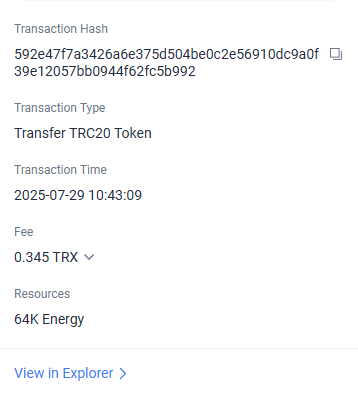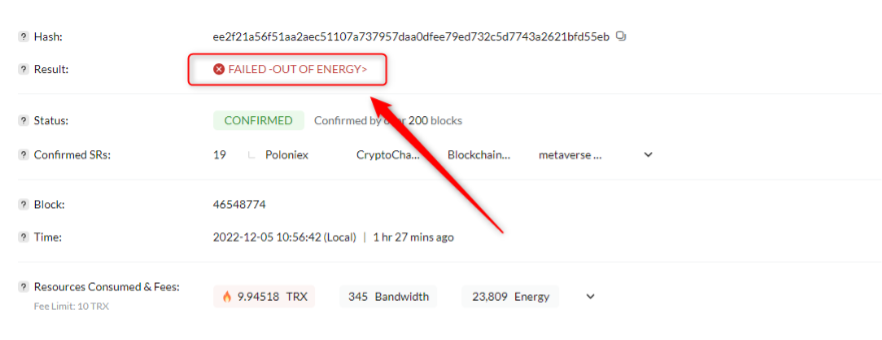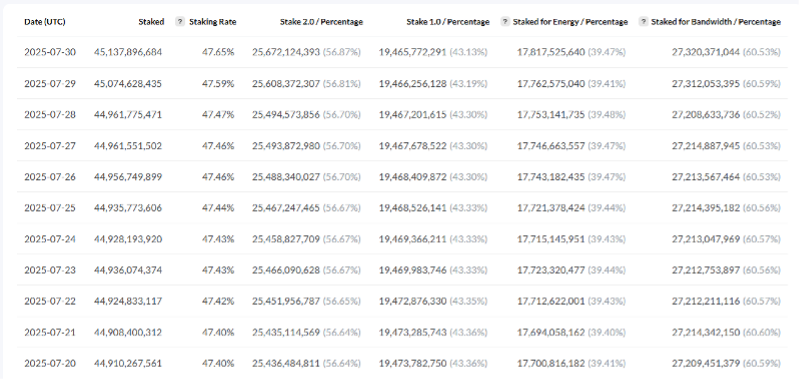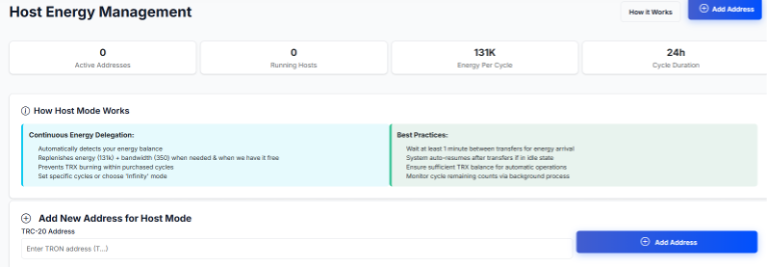With high adoption rate and low transaction prices, TRON has grown to be a titan of cryptoenthusiasts – the solid monarch of USDT transfer. That popularity, though, has resulted in a plethora of information coursing through the Internet — some correct, much of it obsolete, some of it outright lies. This may sound simple, but for new users diving into this crowded ecosystem, this sea of information can overwhelm them. Misleading ideas and trending myths may confuse you, make you feel fed up, and may even cost you money by following ineffective practices.
Is this for real that transferred USDT to your TRON wallet are free of charge? Is it a foolish bet to rent your Energy from a 3rd party? Is it a must to be a TRX whale to pay less fee? This guide is here to clear up the few things. The following hermeneutical process will through the most prominent myths and elaborate on the ever-recurring misunderstandings concerning the aforementioned TRON network, its respective USDT tokens, and the revolutionary phenomenon of Energy rental. In this article, you will not only learn how the network actually works in 2025 but also what and how to do to manage your assets — securely, efficiently, and as cost-efficiently as possible.
Myth #1: "Entire USDT Transfer Is Free on TRON"
It is one of the most underlying, pervasive, but also misleading myths about the TRON network. TRON is king of the affordables now, but it is not free and will never be free. It will cost you something, but it's not the kind of cost most people think. Unlike the direct "gas fee" taken from your balance, TRON employs a resource-based model: Energy and Bandwidth.
- Bandwidth is the medium used for virtually all transactions, and every account receives a small daily free allocation.
- Smart contracts will consume another key resources while they are being interacted with: Energy. USDT on TRON is a smart contract (in other words, TRC-20 token), so each USDT transfer consumes Energy.

The network does not reject the transaction if your account can not drape sufficient Energy to accommodate it. Instead, it simply burns the amount of TRX necessary from your own balance in order to create the Energy you require, right then and there. This is where users are slammed by surprise "fees". In mid-2025, a classic USDT transfer to address without USDT can take approximately 131,000 Energy. The cost of this would be around 27 TRX for you if you burned it directly when you have 0 Energy. Well, cheaper than an Ethereum transaction, but still not free. The ultra-cheap transactions that are promised are not free in any sense, but rather by obtaining Energy smartly than Just burning TRX to obtain cheap transaction fees.
Myth 2: "Renting Energy is not Safe, I will Lose My Crypto"
To new users, who have been taught to be cautious with their funds, the idea of "renting" a blockchain resource from some unknown third-party service can sound alarming. The concern is that when you are interacting with these platforms, you are allowing them to have access to your wallet or private keys. This is a major misconception about how the process works on a technical basis.
Tron Energy rental is based on a native functionality in the TRON blockchain known as delegation. When a service gives you Energy, they are not pulling from your wallet. The owner of an amount of frozen TRX, for example, signs a transaction, which delegates the Energy generates by her TRX to your address within a certain time range.
This process is completely non-custodial.
- Example: TronLink or Trust Wallet — your private keys never leave your wallet They are only used in signing the transaction paying the rental fee.
- The Energy provider has no way of accessing, transferring, or controlling your wallet funds whatsoever. This means they can only send Energy one-way, to your address.
It would be like someone paying for your toll pass for your car for an hour. You get paid by roommates but never by opening your car door, obtaining the keys, to acquire the car. This on-chain delegation method is secure by itself, and reputable Tron Energy rental services simply enable that, which in turn makes it one of the safest methods to optimize your transaction expenses.
Myth #3: "My USDT is Stuck or Lost Because One of My Transactions Failed"
When it occurs with a big amount of money, a failed transaction can be a shocking experience. The immediate fear is that the money has been sent to black hole. But fortunately, this is not the case in the TRON network (and in most of the blockchains).

Failed Transaction = Transaction was never successful or included in a block. So the network, tried to process it, detected a problem, and had to reject it. Therefore, your USDT wallet balance, on the other hand, is unaffected. You never left money in your wallet.
So, why do transactions fail? By far the most prevalent reason this happens is lack of Energy. If you do not have enough Energy, and you do not have enough TRX in your wallet liquid for the network to burn to pay for it, the transaction will simply fail. There are other reasons such as network overloaded or wrong address of the receiver, etc., but lack of resources, is the main reason. Its bottom line is that your assets are protected. If your transaction fails, you may see a "fee" being deducted from your wallet history for the attempt, but this is only for the small amount of Bandwidth that was consumed, and is essentially negligible.
Myth #4: "Freezing TRX is Always Better"
Another way to have an autonomous source of Energy for the users who wish to freeze their TRX, which is a perfectly valid strategy. This means earning a constant, foreseeable flow of Energy by locking up your TRX. However, the myth that this is always the better option stems from a misunderstanding of capital efficiency.
In order to produce the ~131,000 Energy required for one daily USDT transaction, thousands of TRX would have to be frozen. This would therefore equate to over $2000 worth of TRX staked, by 2025. This capital is then tied up, unable to be touched for at least 72 hours, and often longer if you want to maintain the Energy flow.

Compare this with its opposite: renting Energy on the Tron blockchain. For only a few TRX (often under 6 TRX at netts.io), you can get the 131,000 Energy immediately.
Here's a simple comparison:
- Freezing. It needs huge capital to set it up, illiquid, cost-effective only when performing a very high level of transactions.
- Rental. Needs practically no capital, keeps your TRX liquid for other use or investment, a predictable, inexpensive operational cost per transaction
Staking is rarely more flexible or cost-effective than renting for the vast majority of users — from individuals to small business owners. Freezing only makes sense for exchanges or DApps that has predictable, massive and 24/7 Energy demand which is a rare use case.
Myth #5: "Energy Required for a Transfer is Constant"
Comprehending the intricacies of Energy consumption can save you the headache of failed transactions. Most users believe that all USDT transfers are the same, but in fact, the price depends on a single factor: the status of the recipient address.
Existing Address. Ones that previously has transactions with the USDT (even if its balance is zero at the time of your transaction) and so, everything will go fine. The network just need to perform the USDT smart contract transfer function. This usually requires 131,000 Energy.
Fresh Address. If the recipient has never received USDT before, the network must do one extra operation to initialize the USDT contract for the address. The entire setup process requires additional resources - 65,000 Energy.
This is why whenever you are renting Energy, it is often better to rent a bit more than you expect to need, especially as you may not know a lot about the address history. Renting 131,000 Energy covers everything and costs just a couple TRX at most, but guarantees you peace of mind and your transaction will likely succeed at the very first attempt.
Tools Behind the Myths
As you work your way through these common misunderstandings and become more experienced with TRON, your requirements will change. Energy renting form will not be enough, as you'll need an easy way for wallet management, automatic transfers and business operations. This is where you will need platforms of professional standards.
Aggregator might be an ideal tool for the single-purpose rental price search, but a dedicated management suite such as the Netts Energy Workspace caters to power users, developers, and businesses. It provides a feature-rich toolkit that allows Energy management to evolve from a labor-intensive process into a simple streamlined automated set of tasks.

Far more than just a simple rental webform, the Workspace includes:
- Automated Smart & Host Modes. These are intelligent automated weapons. The system can automatically allocate Energy to your wallets once their balance is lower than a pre-defined threshold value or does it every 24 hours. That is great for active traders or businesses looking for Energy on tap without having to press a button.
- Financial Management. It enables you to manage deposits and withdrawals, view your complete transaction history and also export data for accounting purposes.
- API Access for Developers. The Workspace also provides a secure API key with IP whitelisting feature for developers to integrate Energy rental directly into their application services programmatically.
- Referral System and Analytics. Companies can use an integrated referral program to add an extra revenue stream, and it comes with complete performance analytics.
Knowing the facts behind the myths allows you to use the TRON network more effectively, and with greater confidence. And as your operations expand, such services like Netts Energy Workspace are here to meet your demands with the proven, enterprise-grade infrastructure required to scale. For any new user, stepping into the TRON world and evolving into a TRON power user is a journey that is full of learning that is profitable and empowering with the right tools and knowledge.
